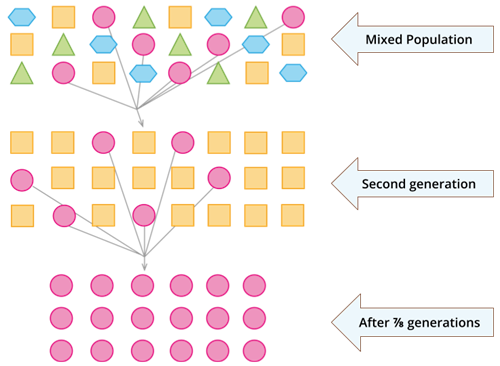
PUMPA - SMART LEARNING
எங்கள் ஆசிரியர்களுடன் 1-ஆன்-1 ஆலோசனை நேரத்தைப் பெறுங்கள். டாப்பர் ஆவதற்கு நாங்கள் பயிற்சி அளிப்போம்
Book Free DemoThe methods of plant breeding for developing high yielding varieties are:
1. Introduction of new varieties of plants
2. Selection
3. Polyploidy breeding
4. Mutation breeding
5. Hybridization
1. Introduction of new varieties of plants:
It is the process of transferring high-yielding plant varieties from one location to another. Such plants are called exotic species. These exotic plant materials may contain pathogens and pests. So, they are rigorously checked in a plant quarantine before being transferred into the fields.
Example:
Phaseolus mungo was introduced from China.

Phaseolus mungo
2. Selection:
Selection is one of the oldest plant breeding methods, where individual plants or groups of plants are picked out from the mixed population based on morphological features. There are three methods of selection, which include:
A. Mass selection
B. Pureline selection
C. Clonal selection
A. Mass selection:
Seeds from the best plants with the desired traits are selected from a mixed population. The selected seeds can be used to raise the second generation. This process continues for seven or eight generations. Finally, they will be multiplied and distributed to the farmers for cultivation at the end of the process.
Example:
Groundnut varieties such as TMV-2 and AK-10 are two common examples of mass selection.
The method works well for characters with high heritability. It is suitable for both self-pollinated and cross-pollinated plants. There is the presence of genetic variation, and the variety produced has wide adaptation.

Mass selection in plant breeding
The disadvantage of mass selection is that the variety produced is of less uniformity.
Reference:
https://www.flickr.com/photos/56047685@N02/5225239473/in/photolist